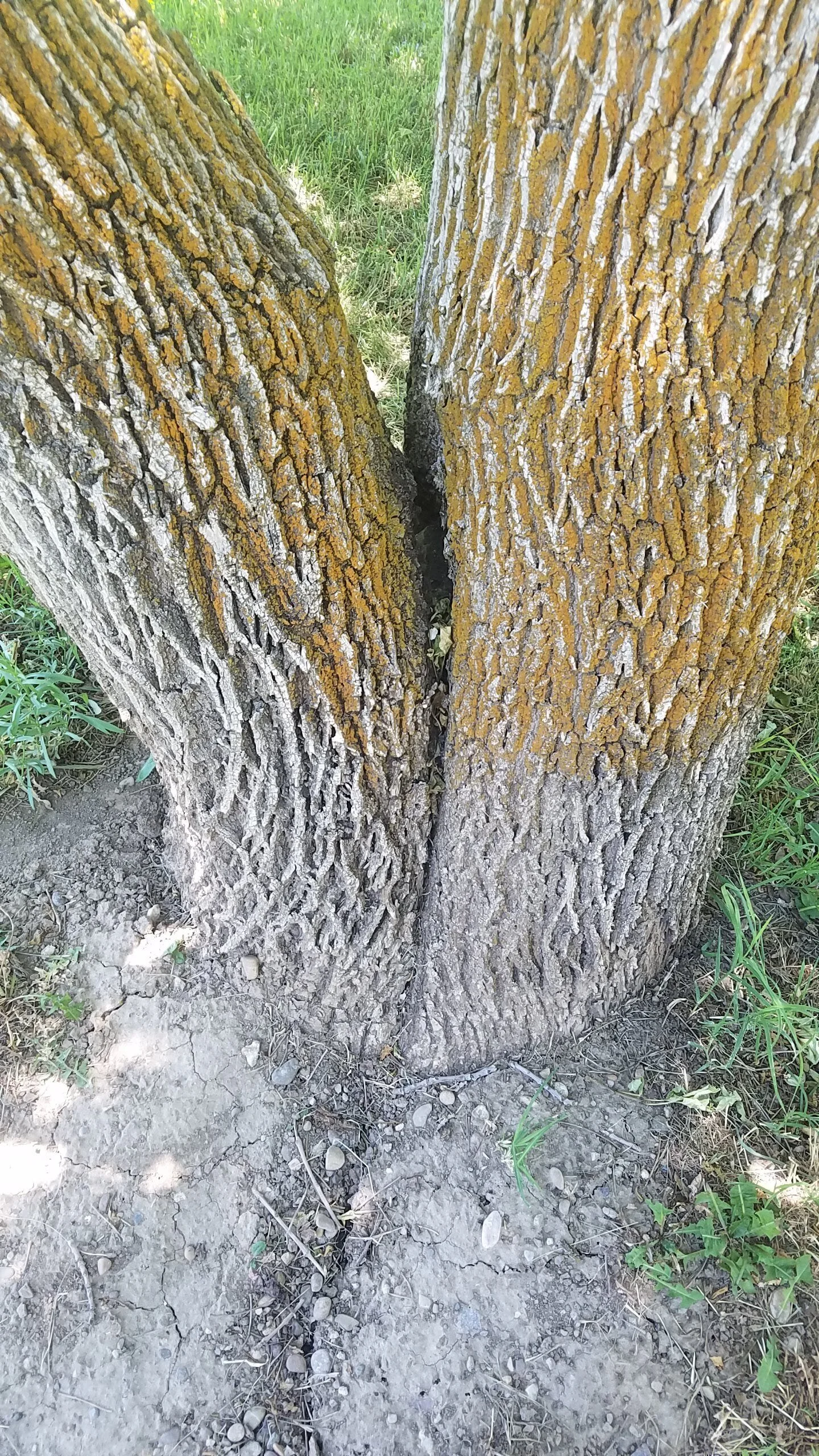Tree Removal
When is tree removal the right thing?
There are many reasons why we love trees, but sometimes we need to part with a tree and say goodbye. Tree removal is needed when a tree poses an unmitigable risk to nearby people, property, or other plants.
Reasons for tree removal
1| The tree is at risk of falling or dropping large limbs. Trees aren’t always predictable, but there are specific signs that indicate a tree is a falling hazard. These include, decay, rot, large hollows, poor branch attachments (like those that develop after topping), open cracks, included bark, dead or dying portions of the tree, trunk lean, canopy shape, presence of mushrooms (especially around the base), exfoliating bark, and sings of pests or disease (boreholes, wilt, etc.).
If you are concerned about a specific tree or limb falling on your house we can inspect it and inform you if we see any hazardous signs. Contact us for a free inspection and recommendation.
2| The tree is dead or dying. This certainly poses a risk of falling and causing damage, but even if a tree is not in a place where it could cause harm, a dead tree might be an unwanted part of a landscape. We can remove a dead and help you choose a new tree to plant and replace it.
3| The tree is diseased and presents a risk of transmitting the disease to other nearby trees. This may be the case for fire blight, a common disease in our region that commonly affects pear and apple varieties.
4| The tree is in the wrong place. Unfortunately, this is extremely common. Landscape designers frequently plant trees too close to structures. The design looks nice when a property is freshly built and tree freshly planted, but they quickly become a hazard as the tree grows. Even if a tree is healthy, tree removal may be warranted if it does not have the space to grow into. We can help you choose and plant a more appropriate tree with our Treescaping service. “Volunteers”, trees that start to grow without planting, are often best to remove. This is common along fences and amongst clonal species like aspen and scrub oak. It can be a nice way to get a free tree, but volunteers tend to grow in bad spots and it is usually best to remove these kinds of trees before they become a problem.
Alternatives to tree removal
There are often alternatives to tree removal. We can conduct a site inspection and assess the necessity of tree removal. If possible, we prefer pruning or installing structural support systems to meet your goals. We advocate for trees when they cannot and we will present alternatives to removal if we think removal is unnecessary.
Consider these benefits before deciding on tree removal:
- Shade lowers your cooling costs. Energy bills diminish approximately 12% in just 15 years after planting a new tree.
- Trees improve the value of a property. A single mature and healthy tree can add $1,000 to $10,000 to your property value.
- Shade helps protect your skin from UV damage.
- Trees and shrubs absorb pollutants in the air and water.
- Trees are a necessary part of the ecosystem and provide essential habitat for animals and insects.
- Trees reduce runoff and erosion. They also allow the groundwater supply to recharge more quickly and prevent harmful substances from reaching streams.
- Greenspace has many health benefits (reduces stress, improves mood, boosts immune our systems, and improves heart health). These benefits can occur in as little as 5 minutes.
- Canopy cover has been correlated to less crime in a neighborhood.
- Trees may cause people to be more helpful and trusting.














